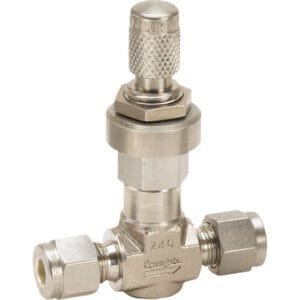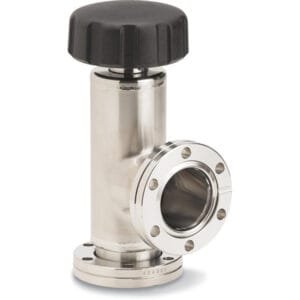Manual 100% Full Closure Viewport Shutters: Total Viewport Protection for High Vacuum and UHV Environments
TFM’s Manual 100% Full Closure Viewport Shutters are engineered to provide absolute protection for viewports in high vacuum (HV) and ultra-high vacuum (UHV) applications. These shutters are specifically designed to prevent material deposition during coating and plasma processes, ensuring long-term visibility and eliminating costly downtime caused by viewport contamination.
Unlike partial shutters, this design ensures true line-of-sight protection through a precision overlapping baffle that completely blocks exposure to incoming particles. This makes it ideal for deposition systems where even minor coating can render optics unusable.
Key Features:
100% Full Closure Coverage: The shutter fully overlaps the viewport with a specially designed baffle, ensuring no line-of-sight exposure during deposition or plasma processes.
Manual Actuation: Operated manually via magnetic rotary feedthrough, allowing for full control without electrical or pneumatic systems. This design avoids breaking vacuum for cleaning or replacement, saving time and operational costs.
Flexible Installation: Can be mounted in any orientation, providing integration flexibility across a wide range of chamber geometries and designs.
UHV-Compatible: Rated for base pressures below 10⁻⁹ Torr, making it suitable for the most demanding UHV environments.
Bakeout Resilience: Constructed from high-purity, vacuum-compatible materials and bakeable to 250°C, supporting thorough system decontamination without component degradation.
Upgrade Options: Pneumatic and position feedback configurations are available for automated or semi-automated systems.
Ideal For:
Physical vapor deposition (PVD) systems
Optical coating chambers
MBE systems and beamline shielding
XPS, SEM, and other UHV-based diagnostic equipment
TFM’s Manual 100% Full Closure Viewport Shutters provide the precision, durability, and vacuum integrity required to protect sensitive optics in deposition-heavy environments—ensuring productivity and clarity without compromise.





Reviews
There are no reviews yet.